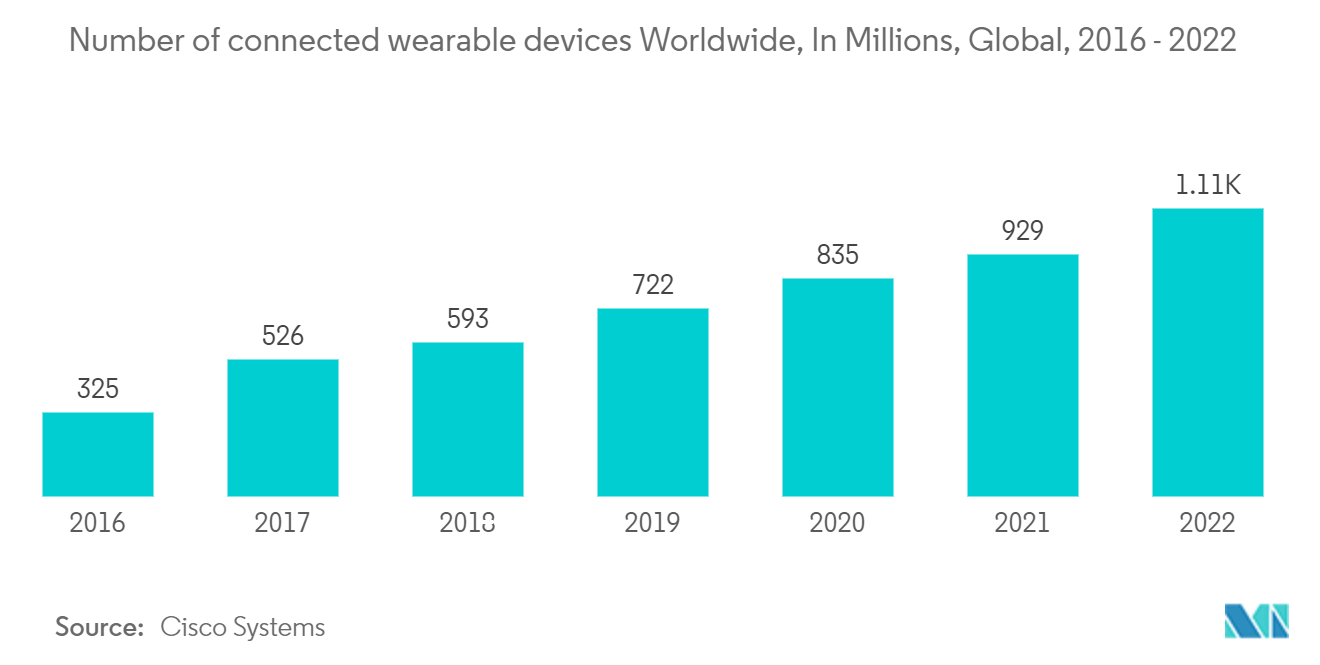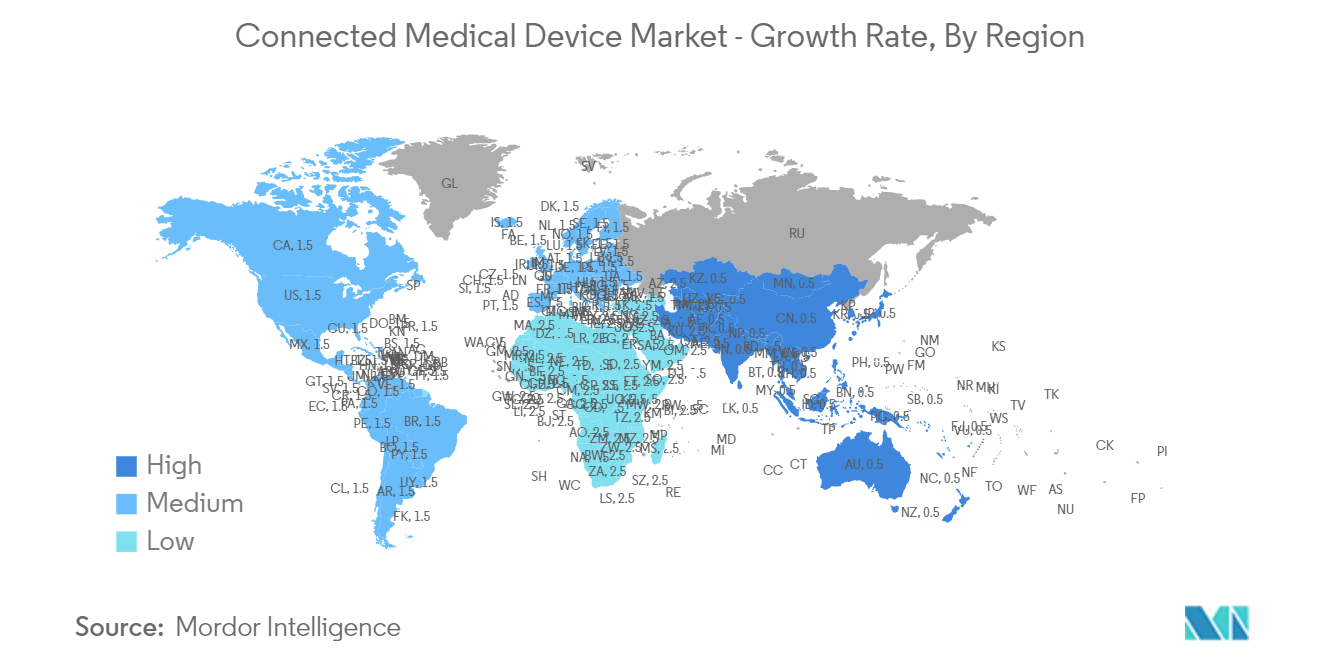Market Trends of Connected Medical Device Industry
This section covers the major market trends shaping the Connected Medical Device Market according to our research experts:
Wearable Device is Expected to Hold a Major Share
- In healthcare, wearable devices offer practical ways to monitor various physiological parameters. Medical solutions do not just benefit customers. They also give doctors up-to-date information to examine patients from a distance. The healthcare industry has a wide range of uses for wearable medical devices, starting from the Apple Watch's EKG capabilities to its glucose monitoring systems.
- Also this year, Apple Inc introduced Apple Watch Series 8 in India, offering the ECG app and several features related to women's health. The watch provided ovulation estimates leveraging a two-sensor temperature sensing technology. The new crash detection was also helpful in forming emergency contacts or nearby facilities in case a crash was detected, which could be highly crucial during fatal encounters. Such devices develop the ecosystem for innovative and thoughtful additions to existing and upcoming medical and everyday wearables.
- In addition to being practical, wearable technology is also economical since the data it produces may allow doctors to make choices from a distance, reducing the number of hospital visits by patients for routine checkups. Moreover, health-related wearables go beyond fitness bands. The vast and expanding healthcare wearable market includes various products, including smartwatches, smart glasses, smart footwear, smart clothes, posture monitors, pain management devices, movement sensors, wrist devices, heart straps, headbands, wearable patches, and medicine delivery pods.
- Disease diagnostics and patient treatment monitoring are about to revolutionize due to mobile technology advancements. You can use wearables as a clinical tool to identify the patterns of a particular disease, provide a better understanding of the disease, and continuously monitor users' health since they are personal gadgets that continuously monitor critical indicators. For instance, FitBit and smartwatches are popular due to how wearable fitness technology has risen into society, introducing exercise-specific modes and customizable features. Over the forecasted period, wearable technology will continue to expand.
- Per Cisco Systems, globally, the number of connected wearable devices has increased from 325 million in 2016 to 722 million in 2019, doubling in only three years. More than one billion gadgets will likely be worldwide by the current year.

North America Holds the Highest Market Share
- The presence of well-established medical device manufacturers, an advanced healthcare infrastructure, expansions, and considerable healthcare spending characterize the US-connected medical device industry. For instance, in December last year, RAYUS Radiology opened a new outpatient-based advanced diagnostic imaging center in Auburn, expanding its operations of imaging clinics around Maine. High-field MRI, CT, and X-ray are just a few diagnostic imaging services the center in Auburn provides.
- Additionally, the FDA authorized the use of Epitel's initial device, a wireless and wearable EEG (brain wave monitor) sensor, in hospital emergency rooms and critical care units last year. Epitel's first FDA-approved product included wearable, wireless sensors, which a nurse or hospital technician could easily and quickly apply. Neurologists could also evaluate and keep an eye out for seizures by connecting the EEG data to a cloud-based software platform they could access from anywhere at any time. Also, in February this year, the company raised USD 12.5 million in a Series A funding round for its wearable seizure detection system.
- Other smart wearable manufacturers are exploring the medical wearables space in the country by introducing innovative solutions which ease data collection through connected app features. In September year, Garmin launched a smart blood pressure monitor, 'Index BPM,' for USD 150, allowing users to measure diastolic and systolic blood pressure anywhere. The FDA-approved upper arm BPM could keep the individual records of up to 16 users and sync the data to their own Garmin Connect app.
- Medical devices, like other computer systems, are susceptible to security flaws, which could jeopardize the device's effectiveness and safety. When there is a reasonable assurance that the benefits to patients and individuals outweigh the dangers, the FDA permits the marketing of devices.
- According to Synopsys, a company that designed computer-integrated systems, the average number of connected medical devices per bed in US hospitals is 10-15. The certification procedure for wireless devices is crucial for businesses looking to bring connected devices to the market. All wireless devices must undergo this testing, separate from that conducted by the FDA in North America. Hence the rise in the total count of connected medical devices in the US would bring immense growth opportunities to the market throughout the forecasted period.


